Ranking the Top 10 Conferences in Men's College Basketball in 2022-23 Season
Ranking the Top 10 Conferences in Men's College Basketball in 2022-23 Season
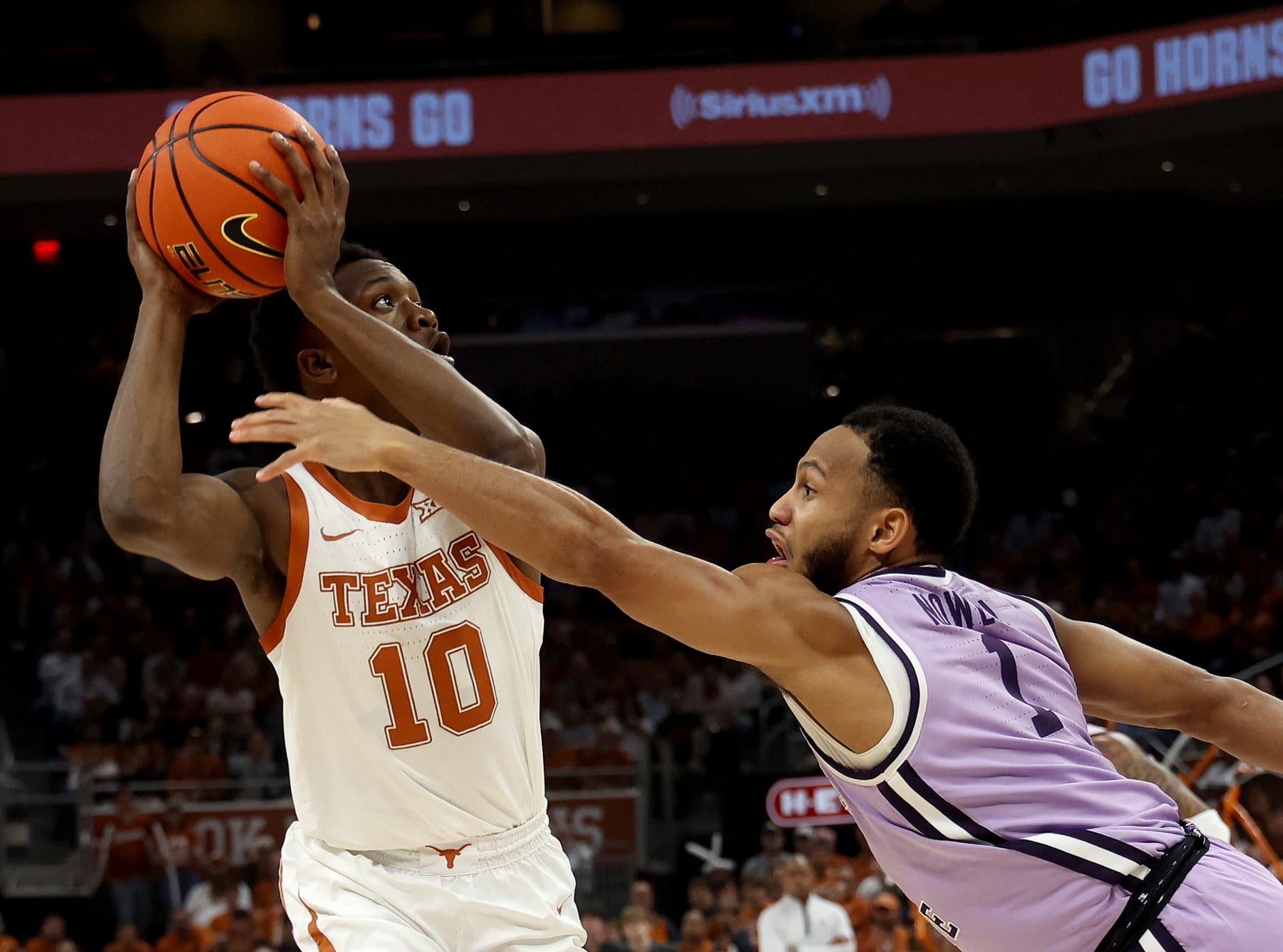
Conference USA, the Mountain West and the Big Ten are all having better years than usual in men's college basketball in 2022-23, but everyone is fighting for second place behind the mighty Big 12.
How did we decide on an order for our top 10 leagues, you might wonder?
By combining the six metrics used by the NCAA selection committee—NCAA Evaluation Tool, Strength of Record, Kevin Pauga Index, KenPom.com, ESPN's BPI and Sagarin—into one average metric for each team and then comparing the conferences.
For each of our 10 ranked conferences, you'll find the following designations: Title Contenders, Final Four Threats, Tournament Teams, Could Sneak In, Not Completely Terrible and Dead Weight. Those buckets are the teams that fall into the composite Top 10, Nos. 11-25, Nos. 26-50, Nos. 51-100, Nos. 101-200 and Nos. 201-363, respectively, as of Tuesday morning.
You'll also find "Average Rank," which is, well, the average national rank of all the teams in the league. The lower the score, the stronger the league.
There are varying opinions on how a conference's strength should be "graded." We tried to take a holistic approach, both giving credit where it's due to great teams while also making sure the league's worst teams are properly accounted for.
Leagues are presented in ascending rank order.
10. Conference USA
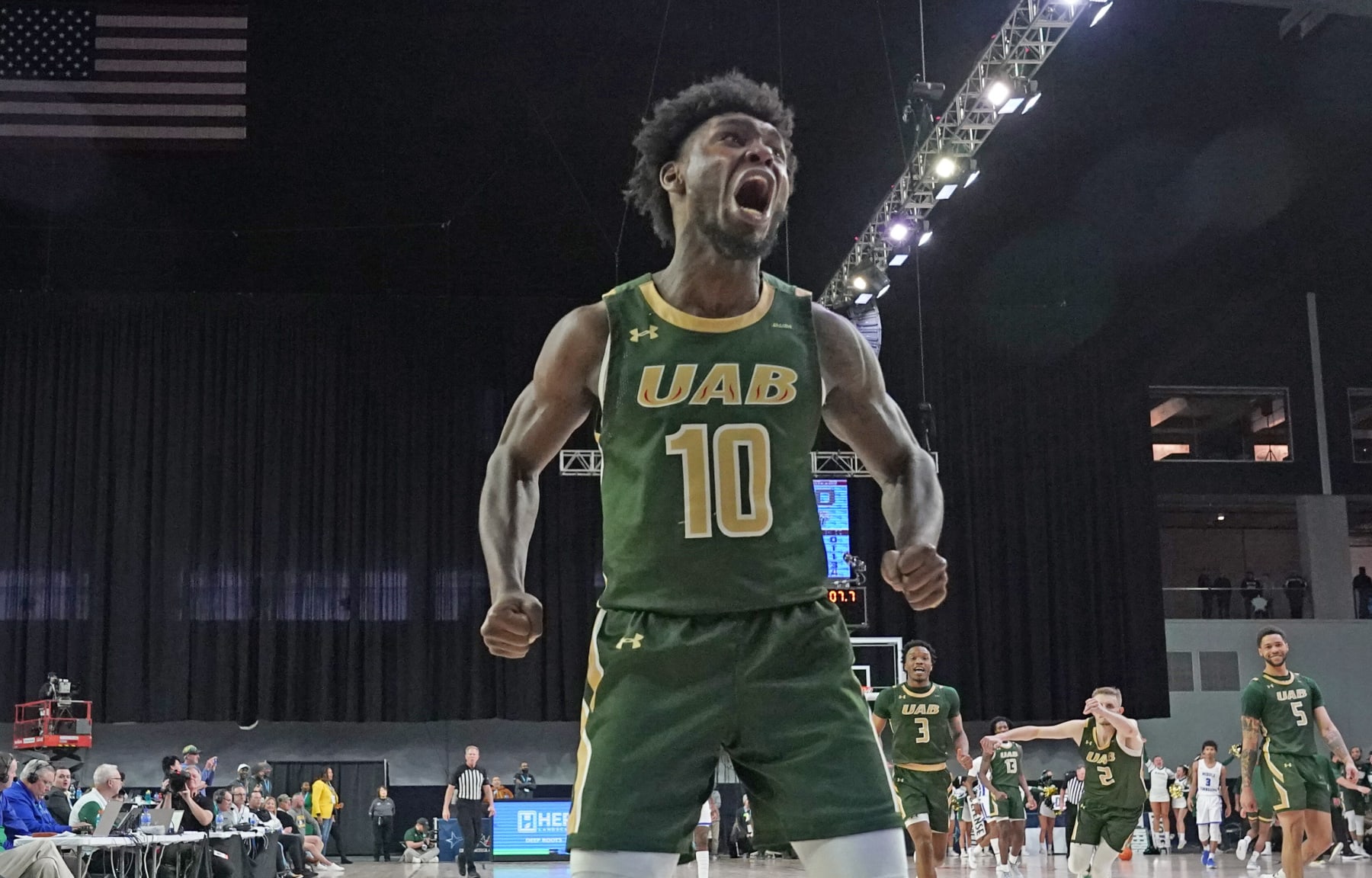
Title Contenders: N/A
Final Four Threats: N/A
Tournament Teams: Florida Atlantic
Could Sneak In: North Texas, UAB, Charlotte
Not Completely Terrible: Middle Tennessee, Louisiana Tech, Rice, Western Kentucky
Dead Weight: UTEP, FIU, UTSA
Average Rank: 147.4
As a whole, Conference USA is nothing special. Any time Florida Atlantic, UAB or North Texas loses to one of the other eight teams in the league, it is an outright disaster for their at-large candidacy.
But because of those three teams up top, this is the best C-USA has looked in quite some time.
Per KenPom, this hasn't been a top-12 conference since 2017-18, and it hasn't ranked in the top 10 since 2011-12—back before the always-in-the-top-10 AAC existed. C-USA did have a solid one-two punch with UAB and North Texas last season, but there were just too many bottom-feeders in what was a 14-team league.
By losing Marshall, Old Dominion and Southern Miss to the Sun Belt and witnessing the improvement of Florida Atlantic by leaps and bounds, the entire conference took a huge step forward.
Of particular note, FAU is 14-1, is 13th in the NET and really should be in the AP Top 25 for what would be the first time in program history. The Owls have accumulated road wins over Florida and North Texas as well as an impressive home win over UAB during their 13-game winning streak.
If today were Selection Sunday and they hadn't secured C-USA's automatic bid, there's no question that the Owls would be an at-large team.
Without any wins worth mentioning, North Texas and UAB are fringe at-large candidates, at best. But they've gone a combined 25-7 to reinforce the preseason notion that they're both top-75 teams.
It's going to get lost in the shuffle of a massive Saturday slate, but the 2 p.m. ET North Texas at Florida Atlantic game is a huge one.
9. West Coast
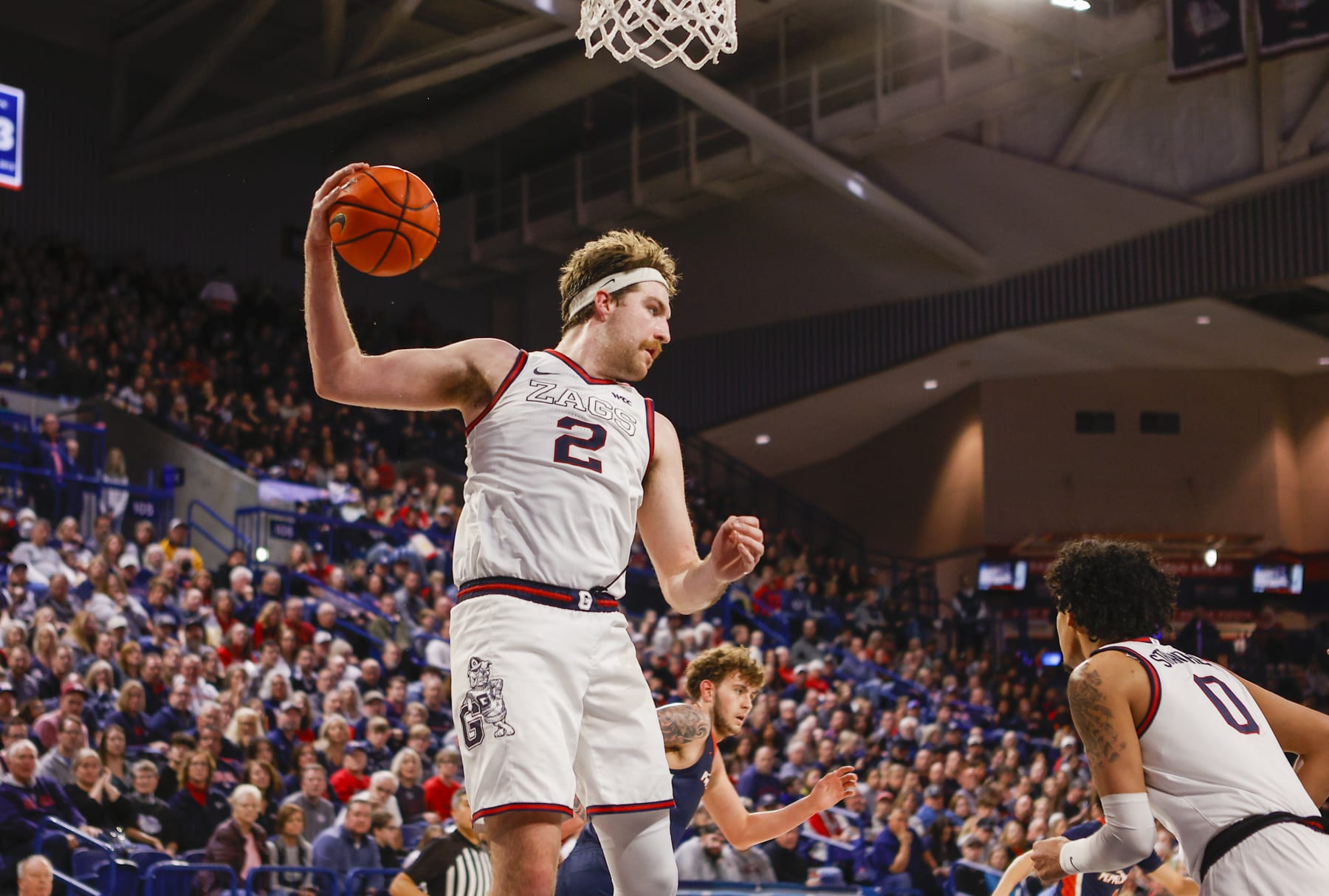
Title Contenders: Gonzaga
Final Four Threats: Saint Mary's
Tournament Teams: N/A
Could Sneak In: Santa Clara, BYU, Loyola Marymount
Not Completely Terrible: San Francisco, Pepperdine, Portland
Dead Weight: San Diego, Pacific
Average Rank: 125.0
The WCC sent three teams (Gonzaga, Saint Mary's and San Francisco) to last year's NCAA tournament, plus two more (BYU and Santa Clara) to the NIT. There was a continental divide between those top five teams and the other half of the league, but there were around 20 WCC games last season that legitimately felt like NCAA tournament-caliber matchups.
Compared to that, it's a down year for the league. Pepperdine's Maxwell Lewis, Loyola Marymount's Cam Shelton and Santa Clara's Brandin Podziemski have been wildly entertaining individuals to watch, but there's not a single Quadrant 1 opportunity to be found aside from games against Gonzaga or Saint Mary's.
However, the battle between the Zags and the Gaels for league supremacy might be better than ever.
Gonzaga has won nine in a row and is making a spirited push for what would be a fourth consecutive No. 1 seed in the NCAA tournament. (Fifth if you count the 2019-20 season when they finished 31-2 and very likely would have been a No. 1 seed had the tournament not been canceled.) Drew Timme is also making a spirited push for National Player of the Year.
But because Saint Mary's has yet to spend a single week in the AP Top 25, not many people seem to have noticed that the Gaels are ahead of Gonzaga and rated as a top 10 team in both NET and KenPom.
They're 14-4 overall against a schedule in which 17 of the 18 games came against KenPom top-200 opponents. Their largest margin of defeat was a five-point game against Houston, which is the best team in the nation by the vast majority of metrics. Saint Mary's has a great primary six-man rotation and an excellent defense, capable of making a deep run in March.
The game in Moraga is Feb. 4. The one in Spokane is Feb. 25. And the darn-near inevitable clash in the WCC championship will be on March 7. Buckle up.
8. American Athletic
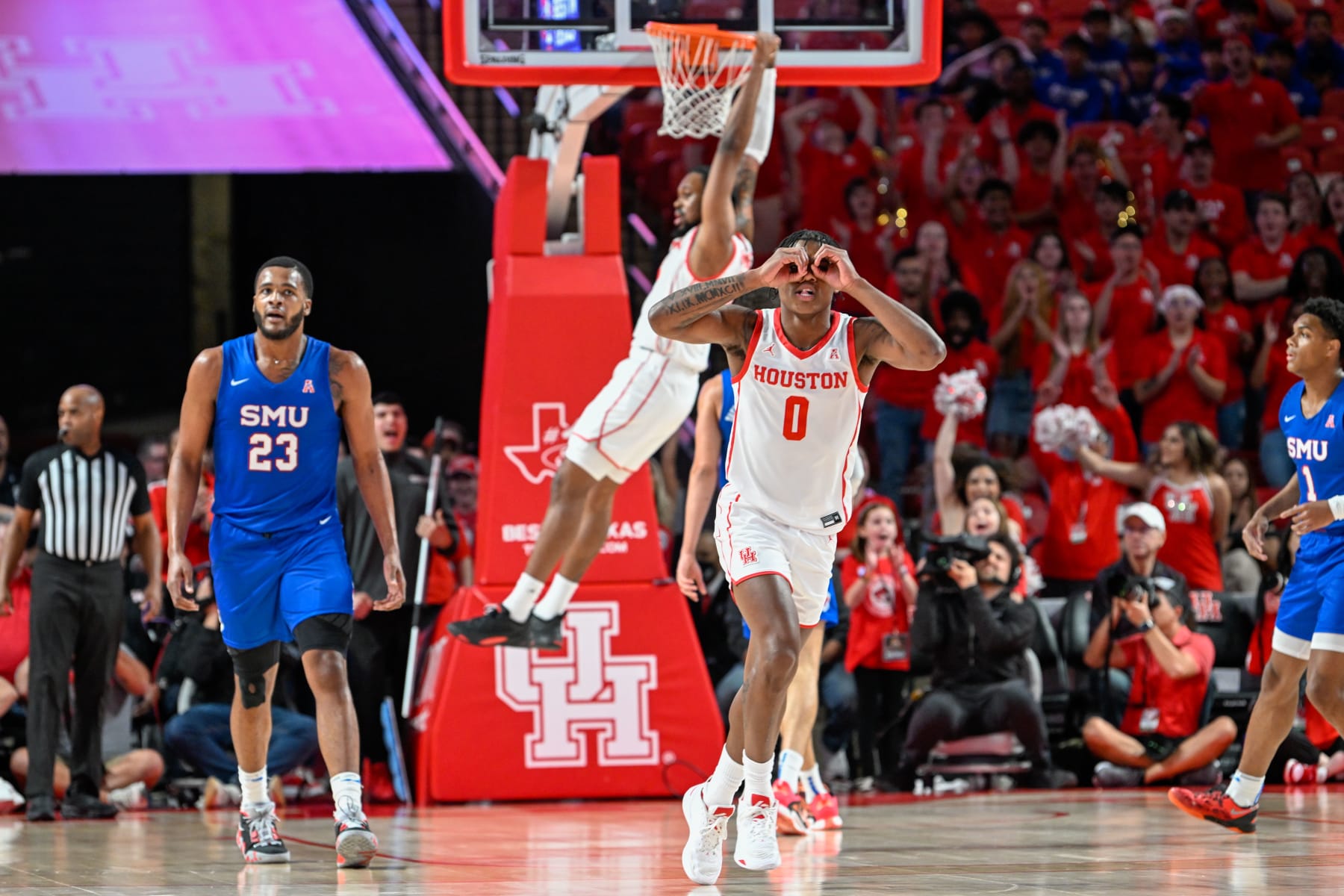
Title Contenders: Houston
Final Four Threats: N/A
Tournament Teams: Memphis, UCF
Could Sneak In: Cincinnati, Tulane
Not Completely Terrible: Wichita State, Temple, East Carolina, SMU
Dead Weight: South Florida, Tulsa
Average Rank: 124.8
In what has become business as usual over the past few years, Houston is the heavy favorite to win the AAC, with two bubble-y challengers hoping they can at least steal one game from the Cougars to enhance their tournament resumes.
As far as Houston goes, it's the best team in the country. No. 1 in the NET. No. 1 on KenPom. No. 1 in the AP poll. The Cougars are elite on defense and pretty darn good on offense once you factor in their relentless offensive rebounding. Their average scoring margin is plus-24.1 points, and most of their games don't even feel that close.
This year's bubble-y teams are Memphis and UCF, both sitting at 12-4 with a couple of solid wins and several near misses.
The Kendric Davis-led Tigers knocked off Auburn on a neutral court and went 6-2 overall against major-conference opponents. The two losses were a 91-88 game at Alabama and a one-point loss to Seton Hall on a banked-in three-pointer at the buzzer. Though it recently picked up a not-great loss to Tulane, Penny Hardaway's veteran-laden squad looks good.
The Knights have been led by freshman stretch 5 Taylor Hendricks, who had 16 points and 12 rebounds in their quality neutral-site victory over Oklahoma State. If they miss the tournament, the season-opening home loss to UNC Asheville might be the biggest culprit.
Memphis and UCF square off Wednesday in Orlando.
Beyond that, there's not much to report. Cincinnati has been respectable, but "Could Sneak In" is pretty generous there. Save for the ones against Houston, the AAC is mostly going to produce Quadrant 2 and Quadrant 3 games for the next two months.
7. Mountain West

Title Contenders: N/A
Final Four Threats: San Diego State
Tournament Teams: Nevada, Boise State, Utah State
Could Sneak In: UNLV, New Mexico
Not Completely Terrible: Colorado State, San Jose State, Fresno State, Air Force
Dead Weight: Wyoming
Average Rank: 100.0
Not since sending five teams to the 2013 NCAA tournament has the Mountain West looked this strong from top to bottom.
And let's start at the bottom, where Air Force just barely avoids and Wyoming just barely falls into the "Dead Weight" category. This league typically has at least two teams that are straight-up bad, finishing well outside the KenPom top 200, if not outside the KenPom top 300. But this year, KenPom has the entire league rated in the top 170.
Air Force has taken a big step forward, while San Jose State has been one of the biggest overachievers in the country, sitting at 11-6 after going 28-116 over the previous five seasons. It appears Tim Miles has turned that program around, and the entire MWC looks better for it.
Perhaps the strangest thing and the thing most indicative of the league's strength is that New Mexico—which made it into the AP Top 25 after starting 14-0 as the last-standing unbeaten in the country—is smack dab in the middle of the 11-team pack. The Lobos are one of six teams with realistic NCAA tournament aspirations, which means good/bubble games on a regular basis.
But if anyone is going to break the curse and finally get an MWC team into the Elite Eight, it's San Diego State. The Aztecs should have beaten Arkansas in Maui and played a great back-and-forth game in Phoenix against a really good Saint Mary's team before falling short in that one.
The defense is solid and they have two legitimate scorers in Matt Bradley and Darrion Trammell. The Aztecs should be a dangerous No. 5 or No. 6 seed in the dance.
6. Atlantic Coast
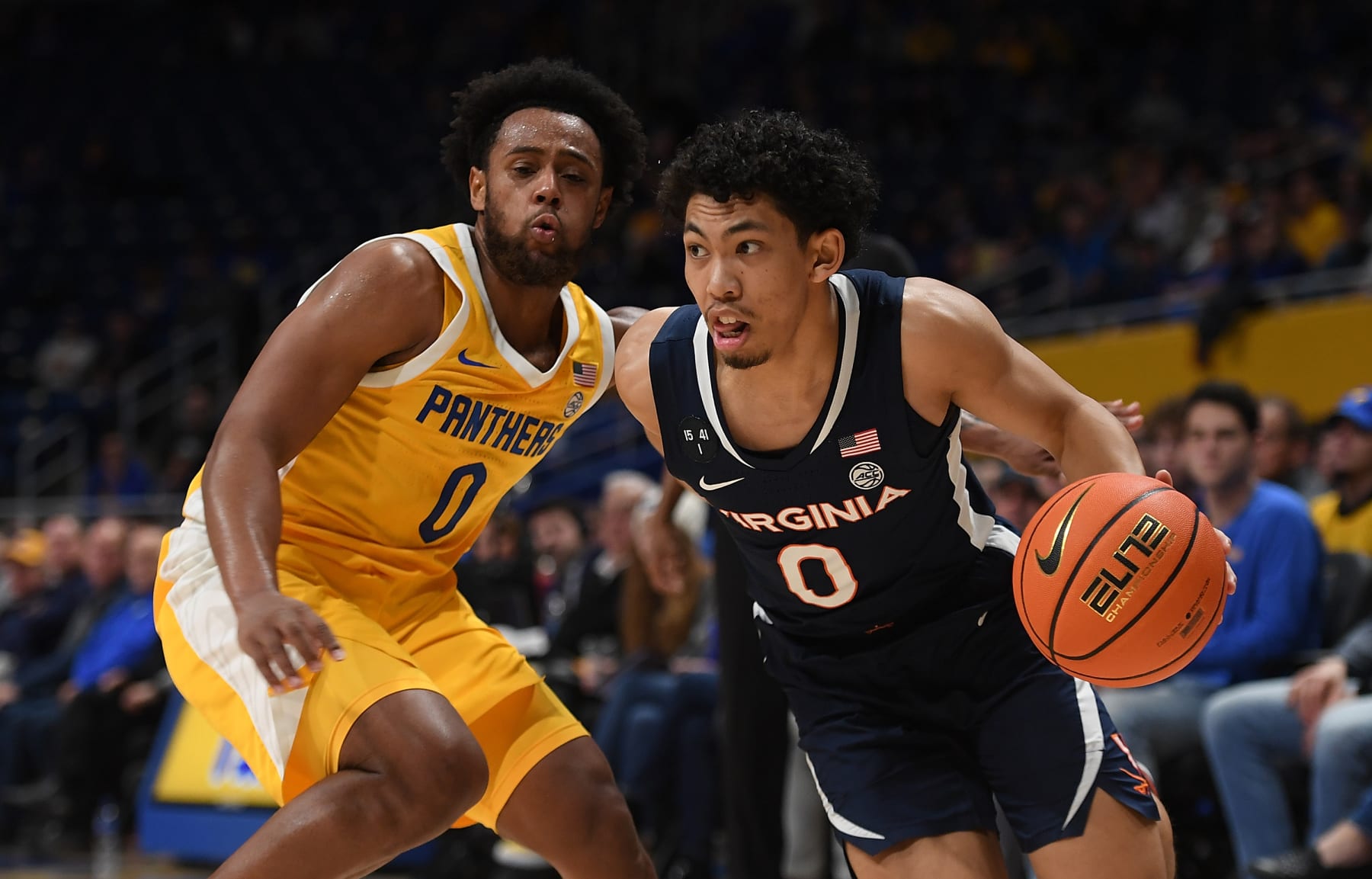
Title Contenders: N/A
Final Four Threats: Virginia, North Carolina, Duke
Tournament Teams: Miami, NC State, Clemson
Could Sneak In: Virginia Tech, Pittsburgh, Wake Forest
Not Completely Terrible: Syracuse, Georgia Tech, Notre Dame, Boston College, Florida State
Dead Weight: Louisville
Average Rank: 93.3
In KenPom history, which dates back to 1997, the ACC has never been quite this bad.
Last year was bad by ACC standards, but using pre-tournament data, its average score was 88.4. And remember, the lower the score, the better the league. So that was still a good bit better than the current situation.
Of course, a lot of that is Louisville's fault. The ACC had a handful of decidedly not great teams last year, but it didn't have anything close to the disaster that the Cardinals are.
If we take both Louisville out of this year's equation and the worst team (Pittsburgh) out of last year's equation, the average scores change to 78.4 this year and 81.6 last year. That's how much of an albatross the 2-14 Cardinals have been.
But even the "good" ACC teams haven't been all that good.
Virginia is probably the league's best team, and the Cavaliers being ranked at No. 13 in the AP poll feels a bit generous. Since beating both Baylor and Illinois in the Main Event—which felt like a huge achievement in mid-November, but both of those teams are now unranked—UVA's best win was a two-point game at Michigan that the Wahoos really should've lost. They've also lost three of their last six games.
Duke and North Carolina are OK, but have both been disappointing. Miami might be good, but it also just got outscored 12-0 down the stretch of a bad loss to Georgia Tech. Clemson is 5-0 in league play and likely wouldn't be deemed worthy of an at-large bid as of today.
Two months from now, this will probably be a six-bid, maybe even a seven-bid, league. But if the ACC fails to put a single team into the Sweet 16 for what would be the first time since 1979, it wouldn't be much of a surprise.
5. Pac-12
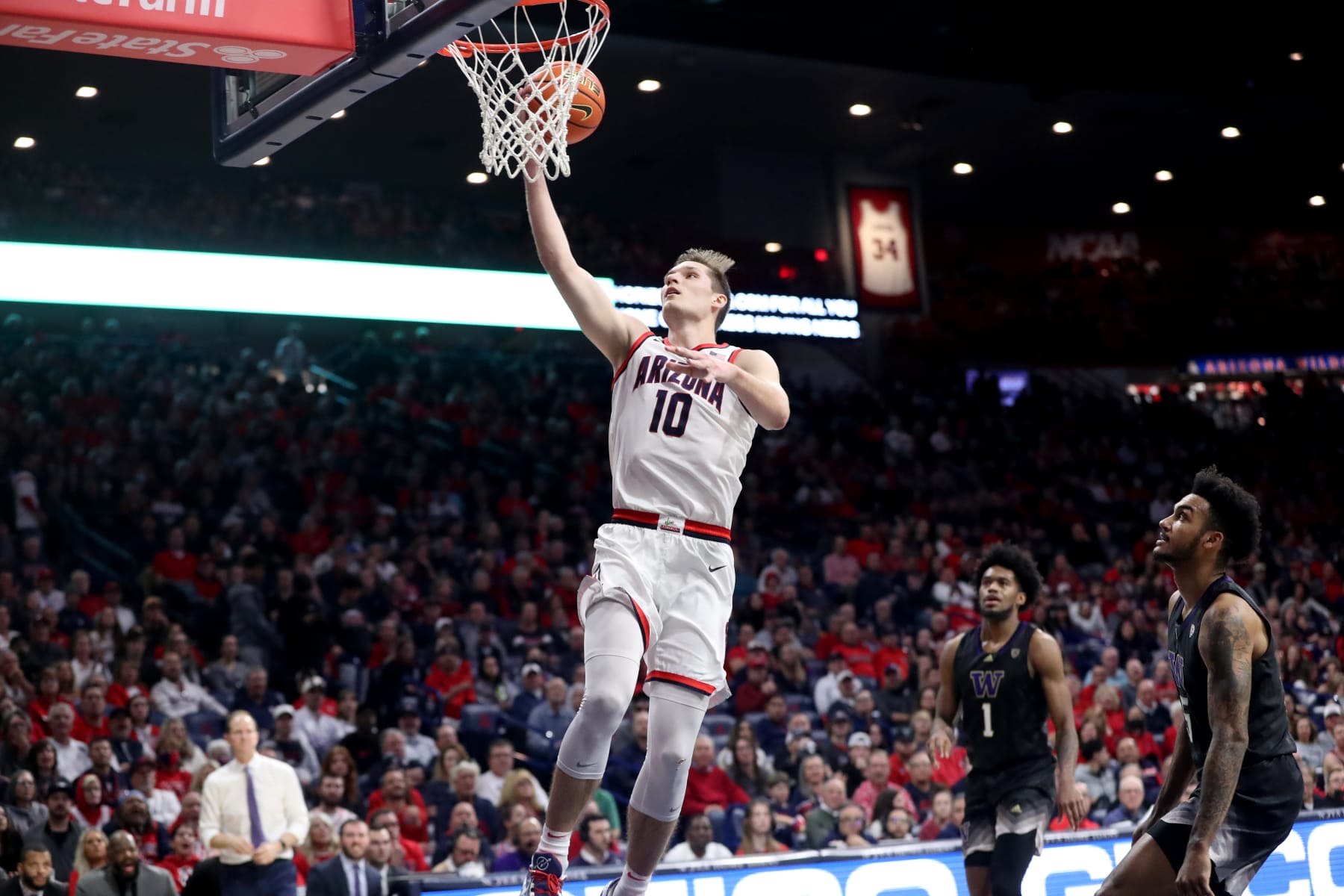
Title Contenders: UCLA, Arizona
Final Four Threats: N/A
Tournament Teams: Arizona State
Could Sneak In: Utah, Oregon, Colorado, USC, Washington State
Not Completely Terrible: Washington, Stanford
Dead Weight: Oregon State, California
Average Rank: 91.0
As bad as the ACC has been, the Pac-12 is only marginally better. Both of those major conferences are much closer to the Mountain West at No. 7 than they are to the Big East at No. 4.
Arizona and UCLA are definitely headed to the NCAA tournament and may well end up battling each other (and Gonzaga?) for the No. 1 seed in the West Region. After Arizona's recent bad home loss to 7-10 Washington State, the Bruins arguably have a slight leg up on the Wildcats. But the head-to-head showdowns should determine which of the Pac-12's two title contenders starts the NCAA tournament in a better position.
Beyond that duo, though, yikes.
Colorado might be the third-best team in the league, but only when it wants to be. The Buffaloes beat an outstanding Tennessee team by 12 in what was effectively a road game, and absolutely destroyed both Oregon and Texas A&M. But they also have terrible losses to Grambling State, Massachusetts and 3-13 California.
Arizona State has the Pac-12's third-best tournament resume, but the Sun Devils lost to Texas Southern and got drilled by 37 at San Francisco.
Utah has a puncher's chance at a spot in the field, but only if it significantly improves a 2-5 record against Quadrants 1 and 2.
And, again, those are the teams jostling for third-best in the league. Meander down the pecking order to Stanford, Oregon State and California and things get mighty ugly.
Living on the East Coast and not having access to the Pac-12 Network is usually a bummer. This year—with both Arizona-UCLA games airing on ESPN/ABC—I don't feel like I'm missing much.
4. Big East
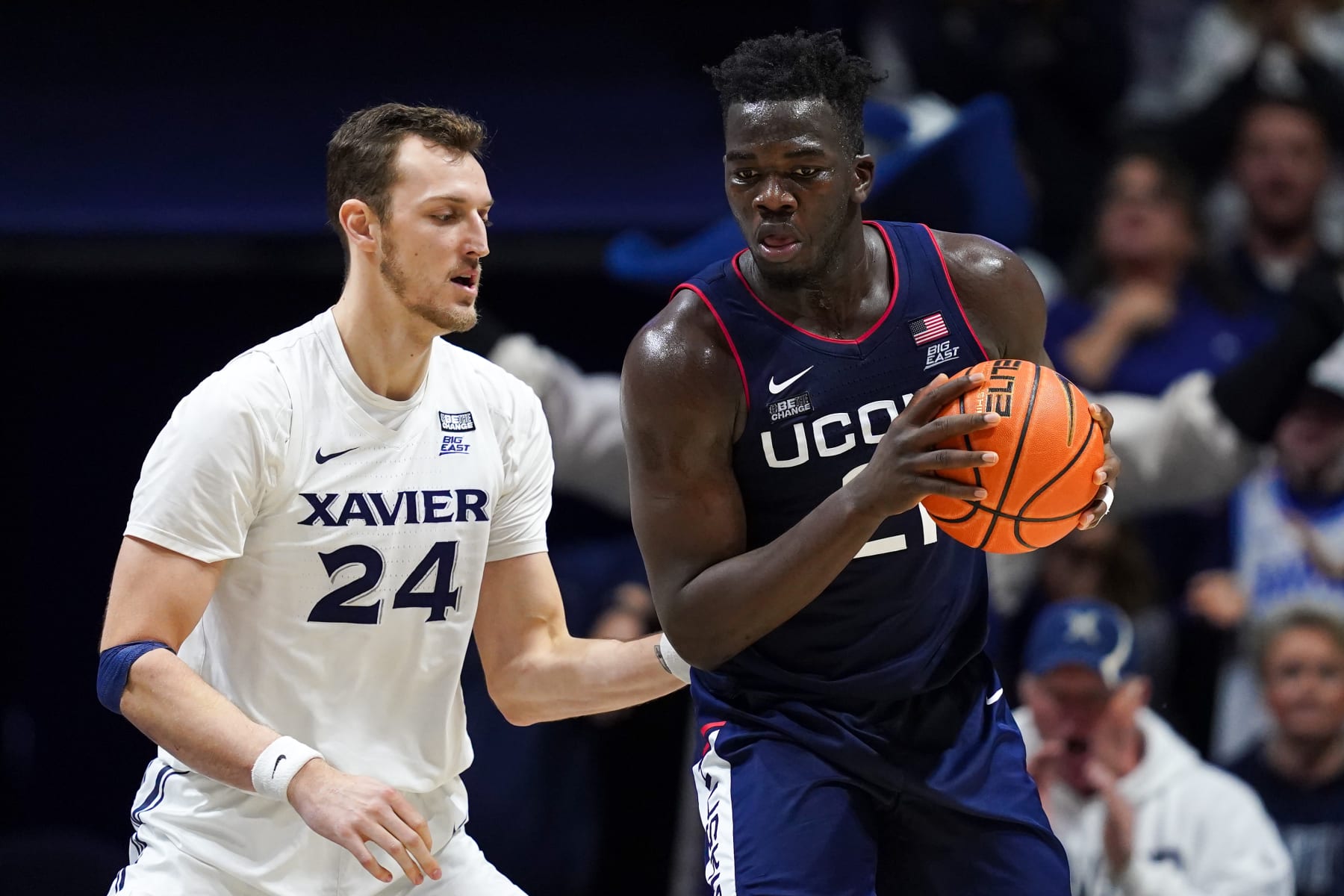
Title Contenders: Connecticut
Final Four Threats: Xavier, Marquette
Tournament Teams: Providence, Creighton
Could Sneak In: Seton Hall, Butler, St. John's, Villanova
Not Completely Terrible: DePaul
Dead Weight: Georgetown
Average Rank: 72.6
What's impressive about the Big East maintaining its status as a top-four league is that it has done so despite Villanova dropping off the map and Creighton failing to live up to the hype.
Both of those teams have dealt with injury and might still be a factor in March. Cam Whitmore missed the first seven games for Villanova (during which the Wildcats went 2-5), and Creighton lost all three games it had to play without big man Ryan Kalkbrenner.
To make up for those preseason favorites cratering to a combined record of 17-15, Connecticut has emerged as maybe the best team in the nation, Xavier has been way better than expected in year No. 1 under Sean Miller, Marquette is playing its best basketball since the 1970s and Providence has been a raging inferno since the start of league play.
If the NCAA tournament started today, those teams are probably looking at a No. 1, No. 3, No. 5 and No. 7 seed, respectively, with Creighton possibly on the right side of the bubble, even with a 9-7 record.
Beyond that quintet, the quartet of Seton Hall, St. John's, Butler and Villanova certainly isn't bad. They've gone a combined 0-13 against the top five teams in the league, but even a home loss to the third-worst team in the Big East wouldn't go down as some sort of unforgivable misstep.
A loss to DePaul or Georgetown is another story, but we'll see if we ever need to have that conversation. The Hoyas have lost 31 consecutive games against major-conference foes, and DePaul hasn't beaten a KenPom Top 50 team since the day before COVID ended the 2019-20 season.
3. Southeastern

Title Contenders: Tennessee, Alabama
Final Four Threats: Arkansas, Auburn
Tournament Teams: Missouri, Kentucky, Mississippi State
Could Sneak In: LSU, Texas A&M, Florida, Ole Miss, Georgia
Not Completely Terrible: Vanderbilt
Dead Weight: South Carolina
Average Rank: 63.4
The bottom halves of the Big Ten and Big 12 are much better than what the SEC is bringing. LSU is probably the eighth-best team in the 14-team SEC. The Tigers would be 12th-best or 13th-best in the 14-team Big Ten and unquestionably the worst team in the Big 12.
But if you could put the top six teams from each league in some sort of round-robin tournament, the SEC and the Big 12 would probably be the co-favorites. (Buckle up for the SEC-Big 12 Challenge in a few weeks.)
As such, the SEC is on a tier of its own, clearly ahead of the ACC, Pac-12 and Big East, but definitely behind both the Big Ten and Big 12.
Tennessee and Alabama are both having fantastic seasons, and it's a crying shame they'll only face each other once during the regular season (at Tennessee on Feb. 15). The Volunteers have the stingiest defense in the nation, per KenPom, while the Crimson Tide have a pretty strong defense of their own, as well as the runaway favorite for National Freshman of the Year in Brandon Miller. Either one could win it all this year.
Not far behind that duo are Arkansas and Auburn, who also have stellar defenses, and who look like legitimate threats for deep tournament runs despite ranking among the worst three-point shooting teams in the country.
Missouri is thriving with a high-octane offense and a Press Virginia sort of approach on defense that is generating nearly a dozen steals per game. And for as much as we've already buried Kentucky for its shortcomings, that's a darn fine sixth-best team in the SEC, provided it can get at least three guys to show up for any given game.
And though the SEC's bottom half is clearly behind those of the top two leagues, the only actually bad team is South Carolina. Even at that, the Gamecocks have a potential lottery pick on their roster (GG Jackson II) who scored in double figures in each of the first 14 games of his career. Can't even tread lightly against them.
2. Big Ten
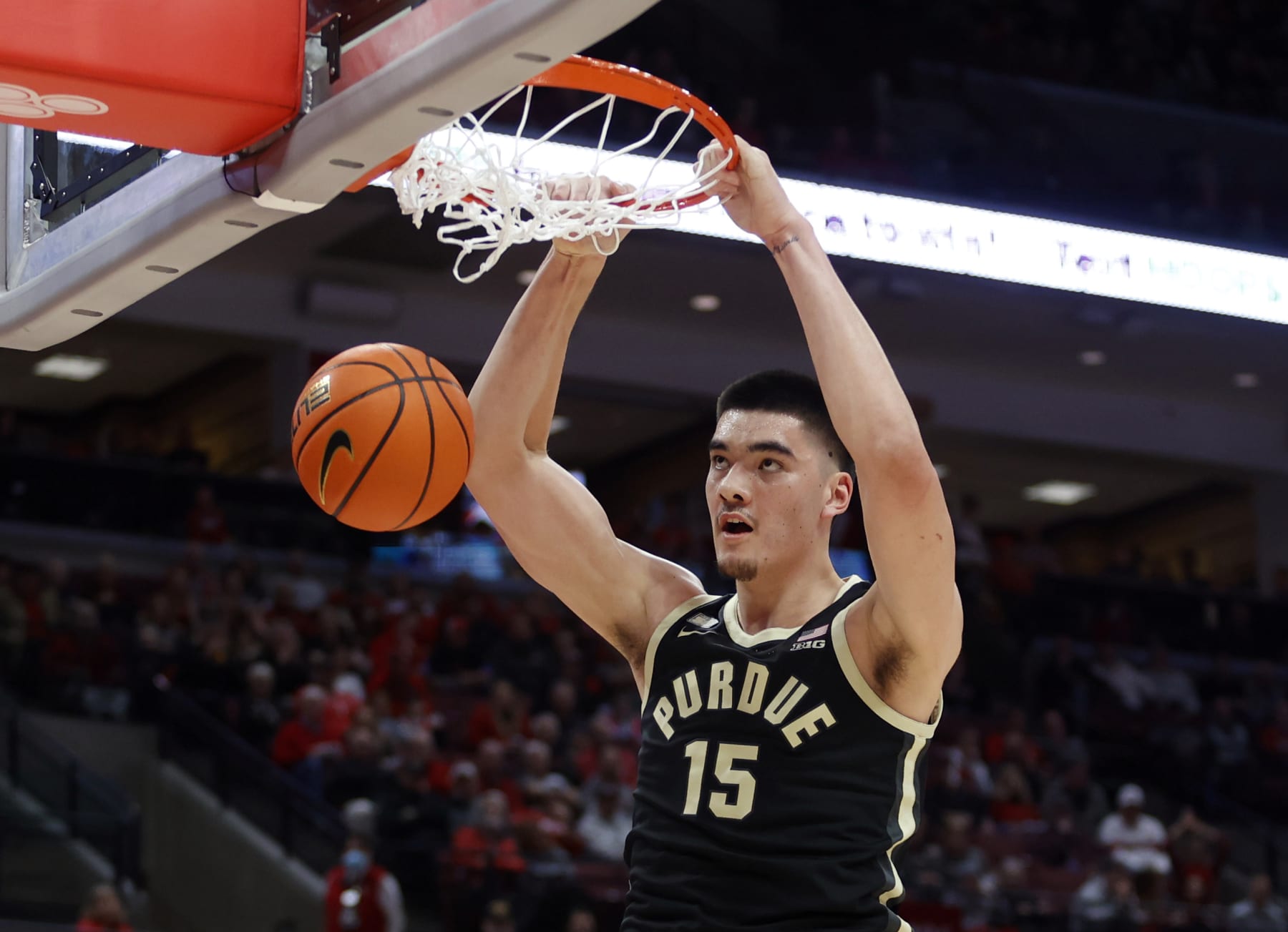
Title Contenders: Purdue
Final Four Threats: Ohio State, Rutgers
Tournament Teams: Indiana, Maryland, Illinois, Wisconsin, Northwestern, Iowa, Michigan State
Could Sneak In: Penn State, Michigan, Nebraska
Not Completely Terrible: Minnesota
Dead Weight: N/A
Average Rank: 52.2
The Big Ten has put nine teams into each of the past two NCAA tournaments and was on track to possibly get 10 teams into the dance in 2020, but this could be the league's magnum opus in which it places 11 of its 14 teams in the field.
Minnesota definitely isn't getting in, and though Nebraska is much more competent than it had been over the past three years, the Cornhuskers are still a long shot.
Everyone else in the Big Ten is a viable threat to make the tournament, though, entering play on Tuesday with 12 teams in the top 55 on KenPom.
And while the Zach Edey-led Boilermakers are somewhat clearly the top dogs in the league, there's little separation between the second-best and the 12th-best teams in the Big Ten.
It looks like those teams are Ohio State and Michigan, respectively, but the Wolverines started 3-0 in league play and may well be favored when they host the Buckeyes in early February. (And goodness only knows whether the version of Michigan that annihilated Maryland or the version that lost to Central Michigan shows up for that rivalry game.)
Eventually, one of the 12 teams will fade in a big way. Probably more than one. But KenPom is projecting 11 Big Ten teams to finish 10-10 or better in league play, with Penn State only slightly behind in 12th place at 9-11. If that happens, this will be the first conference to place at least 10 teams in the tourney since the 2010-11 Big East sent 11 teams.
It might be Purdue as a No. 1 seed and then nine or 10 teams in the Nos. 6-12 range, but it's going to be fascinating to watch that pecking order play itself into form over the next two months. This league has already delivered more than a few wildly unpredictable results.
1. Big 12
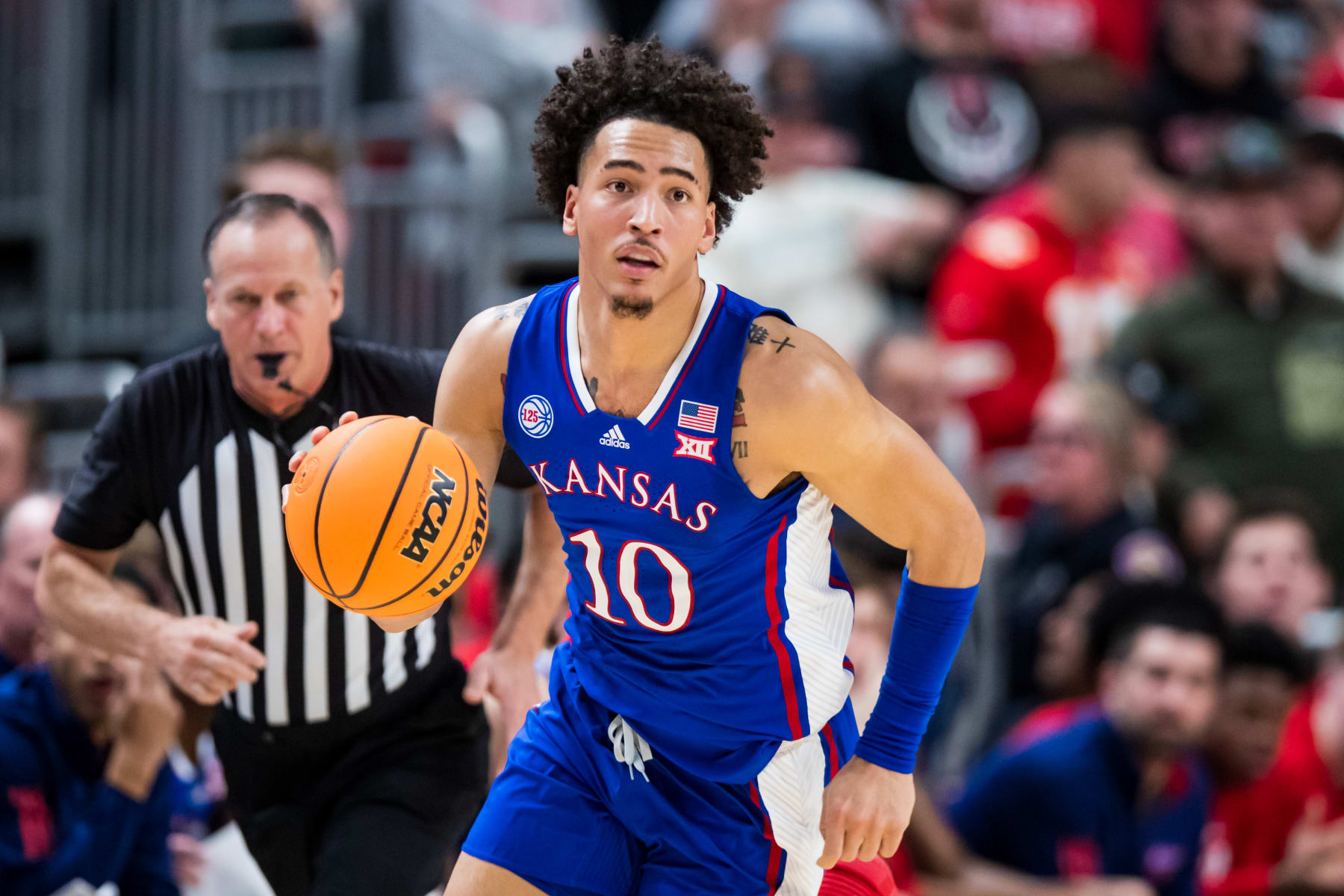
Title Contenders: Kansas, Texas
Final Four Threats: Kansas State, Iowa State, TCU, Baylor
Tournament Teams: West Virginia, Oklahoma, Oklahoma State
Could Sneak In: Texas Tech
Not Completely Terrible: N/A
Dead Weight: N/A
Average Rank: 29.0
To reiterate, the Big Ten is having a strong season that could result in 11 teams making the NCAA tournament.
And it is just nowhere close to the Big 12's level of excellence.
We could even do the Big Ten a solid by removing Minnesota and Nebraska from the equation, and it would still only have an average rank of 38.4 compared to the Big 12's preposterous 29.0.
As things stand, the only Big 12 results that don't count as Quadrant 1 games are the home games against Oklahoma State, Oklahoma and Texas Tech. Even those fall solidly into the Quadrant 2 bucket, making every game feel like a must-watch affair and a major opportunity for the victor to enhance its resume.
I will say Texas Tech has a lot of work to do to become a tournament team, as it entered Tuesday's game at Iowa State with nary a victory over a team in the NET top 145. But if they play .500 basketball the rest of the way, voilà, the Red Raiders would have seven or eight Quadrant 1 wins, which almost has to be good enough for a bid.
And if Texas Tech can pull that off, it's a realistic proposition that the Big 12—which has never sent more than seven teams to the NCAA tournament—gets all 10 teams in this year.
For that dream scenario to transpire, everyone likely needs to finish 7-11 or better in conference play. (Texas Tech needs to at least get to 8-10, given its laughable nonconference schedule.) It wouldn't hurt if the No. 10 seed in the Big 12 tournament at least knocks off the No. 7 seed in the first round, too. But it's possible.
The real question is: Who manages to survive this gauntlet with enough left to make a deep run in the NCAA tournament?
Kansas is in prime position for the No. 1 overall seed in the dance, but the Jayhawks also rank 349th in the nation in bench minutes. It will be interesting to see how the reigning national champs—who also put together a murderers' row of a nonconference schedule—hold up through two slobberknockers per week for the next two months.
